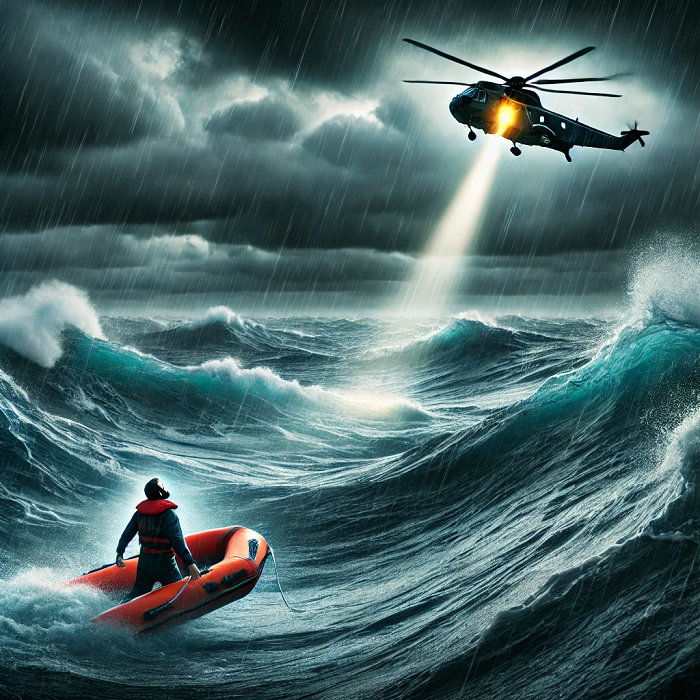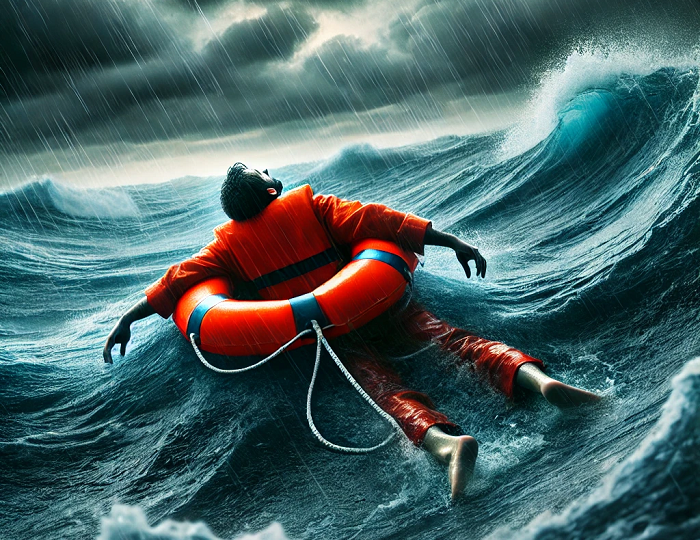Imagine this scenario: a boat is stranded in the middle of the ocean, slowly sinking beneath the waves. The sailor manages to send a distress signal before the boat goes under, but now, he’s adrift in a vast expanse of water, alone, and likely feeling helpless. How can search teams possibly find a single person lost in the middle of the ocean?
Today, let’s take a closer look at how air-sea rescue teams locate people lost at sea, using a combination of technology, experience, and the determination to bring everyone home safely.
The Search Begins: Distress Signals and the Call for Help
The moment a vessel begins to sink, the clock starts ticking for the air-sea rescue teams. The first step in locating someone is receiving a distress signal. Fortunately, most modern boats are equipped with some form of emergency communication, like an Emergency Position-Indicating Radio Beacon (EPIRB) or Personal Locator Beacon (PLB). These devices automatically send a signal to satellites or nearby vessels, providing the last known location of the boat or individual.
In a typical situation, a sailor would activate their EPIRB, which transmits the location to a network of rescue coordination centers. The signal allows the search and rescue (SAR) teams to narrow down the search area, often within a radius of a few miles, but ocean conditions and weather can quickly complicate things.
If the boat had sunk before sending out a signal, the rescue process would rely on more indirect clues, such as last known positions, communication logs, and planned route details, to start plotting a search area.
A Race Against Time: Search Patterns and Reconnaissance
Once the distress signal is received and the approximate location is identified, the real search begins. The open ocean is incredibly vast, so SAR teams use highly coordinated search patterns, designed to maximize coverage of a given area in the shortest time possible.
Common patterns include:
- Creeping Line Search: This involves flying or sailing in parallel lines, covering a grid to search every inch of the area. It’s often used when rescuers have a general idea of where the person might be.
- Sector Search: Used when the position is even more pinpointed. A helicopter or plane will spiral outwards from the last known location, expanding its radius with each pass to cover more area.
In many cases, aircraft play a crucial role. Planes and helicopters equipped with advanced radar and sensors can scan wide sections of the ocean from above. They use infrared cameras to detect body heat, high-resolution cameras to spot small objects, and even specialized radar that can distinguish debris or life rafts from waves. Helicopters, in particular, are useful because they can hover low and directly over areas where survivors might be floating.

The Power of Human Sight and Experience
Despite all the technology at play, human eyes remain one of the most effective tools in air-sea rescue. Trained SAR teams are often able to spot something as small as a life raft or a person in the water where machines might struggle. The team in the aircraft will scan the ocean’s surface for unusual patterns, like a break in the waves, a flash of bright color from a life jacket, or movement that could be a person signaling for help.
Timing is critical. In rough seas, even with life-saving equipment like life jackets or rafts, survivors face risks from hypothermia, dehydration, and exhaustion. The longer they remain in the water, the harder they are to spot, and the more dangerous their situation becomes.
What if There’s No Signal?
In cases where no distress signal was received, SAR operations take a different approach. They rely on drift modeling, a method that uses data about the ocean’s current, wind, and weather patterns to estimate where a person or debris might have drifted since the incident occurred.
SAR teams often start by looking at the boat’s planned route and combining it with the conditions at sea. Using oceanographic data, they map out a potential search area that factors in the drift over time. The model is constantly updated as new information comes in, which allows the search teams to stay as close to the likely location as possible.
Technology at the Forefront: Drones, Satellites, and AI
Advancements in drone technology and artificial intelligence (AI) are giving rescuers new tools to find people lost at sea. Drones can be deployed quickly and can fly over specific search areas without needing to refuel, covering more ground in a shorter amount of time. AI, combined with satellite imagery, can analyze vast stretches of ocean to identify anything that stands out.
New developments in machine learning have also led to programs that can scan thousands of satellite images in seconds, highlighting areas of interest for human rescuers to investigate further. These tools help make searches more efficient and less time-consuming, especially when the search area is large and conditions are challenging.
The Final Stage: The Rescue
Once the individual is located, SAR teams move into the rescue phase. Helicopters are often dispatched to hoist survivors from the water or from life rafts. If the conditions are too rough for a helicopter, boats from nearby vessels or coast guards may be used to reach them.
Survivors are typically treated for immediate medical concerns like hypothermia or dehydration, and often, air-sea rescue personnel are trained medics capable of delivering life-saving care on the spot.

Final Thoughts: A Lifeline in the Ocean’s Vastness
Air-sea rescue is an extraordinary coordination of human expertise and technology, where every minute matters. Whether it’s the high-tech beacons and satellites that guide teams, the seasoned experience of SAR experts scanning the horizon, or the courageous rescue crews who descend into the ocean’s waves, each part of the system works together to give stranded sailors a lifeline when hope seems lost.
At GertieBlu, we’re endlessly inspired by these real-life rescue operations. They remind us of the incredible feats humans are capable of in the face of overwhelming odds. So next time you gaze out over the seemingly endless ocean, remember there are dedicated heroes and cutting-edge tools ready to help those in need—no matter how far from shore they might be.









